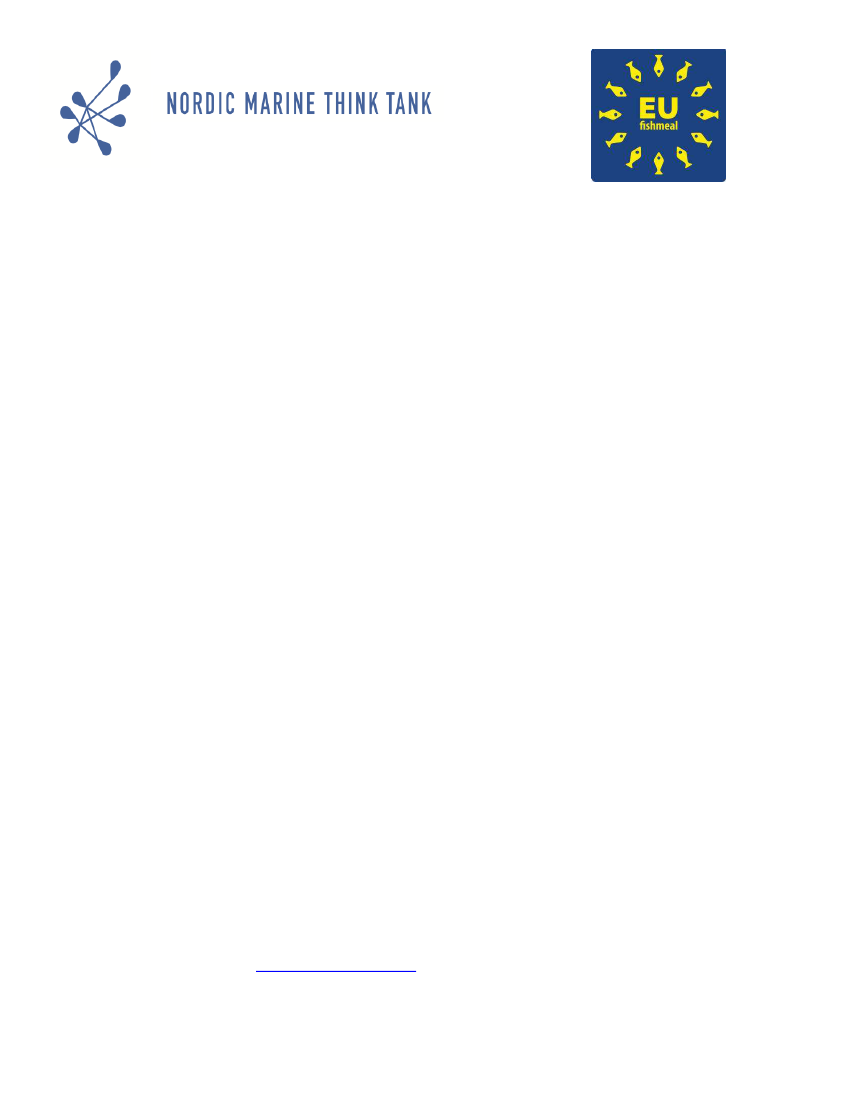
INVITATION
to
A CONFERENCE ON IMPROVED FISHERIES MANAGEMENT
MODELS
Axelborg, Axeltorv 3, 1609 Copenhagen V, Denmark
8
th
October 2019, 14:00
–
17:00
Followed by refreshments
The Nordic Marine Think Tank (NMTT) and EUFishmeal are delighted to invite you to a
Conference on 8
th
October 2019 dealing with the findings of the recently finalised Fmsy project.
The project, which was conducted in 2017-2019, shows that changing fisheries management
models to take account of ecosystem interactions and density dependent factors can provide
considerable increases in Fmsy values. Considering that these models can provide more reliable
and accurate outcomes they provide a much needed up-date for fisheries scientists and
managers.
The F sy proje t has i ol ed so e of the orld’s est-known
fisheries research capacities in
biology and fisheries management from a range of North Atlantic countries. The project has
been undertaken with financing from the Nordic Council of Ministers, the European Maritime
and Fisheries Fund and the Danish Ministry of Environment and Food, as well as the Norwegian
Fisheries Research Fund via IMR Norway.
The Fmsy estimates in the project can already now be used directly in the annual assessment
and advisory process to guide managers and the purpose of the Conference is to introduce this
as a more correct basis for the management of the fisheries resources and to broaden the
knowledge of ecosystem-based fisheries management.
Register by email to:
no later than Friday October 4
th